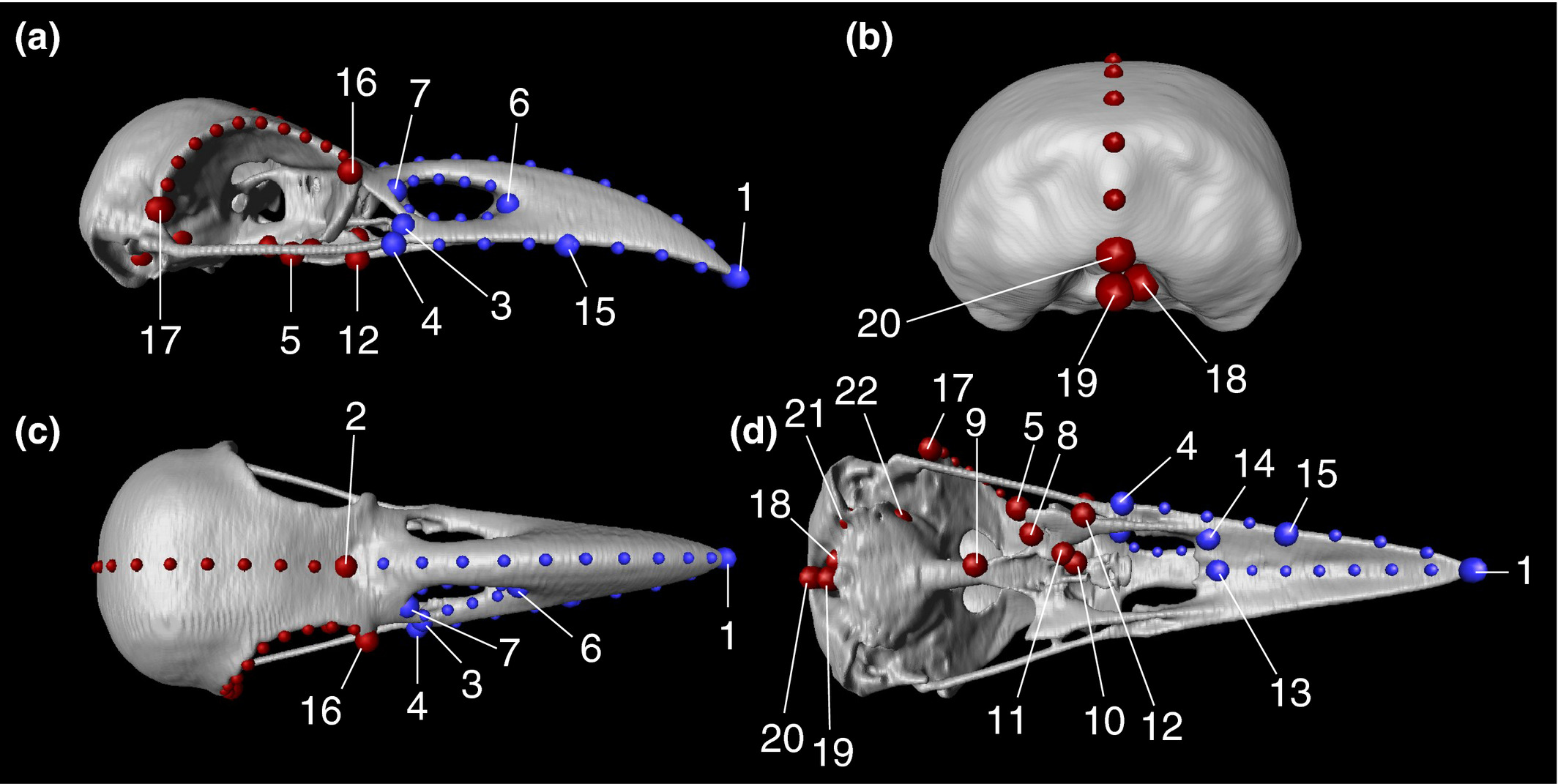Allometry and integration do not strongly constrain beak shape evolution in large-billed (Corvus macrorhynchos) and carrion crows (Corvus corone)

Here, to evaluate the intensity of evolutionary constraints on avian beak shape more appropriately, we selected large billed (Corvus macrorhynchos) and carrion crows (Corvus corone) as study objects. These landbird species seem to experience selection pressures favoring a departure from an allometric trajectory. A landmark based geometric morphometric approach using three dimensional reconstructions of CT scan images revealed that only 45.4% of the total shape variation was explained by allometry and beak–braincase integration. This suggests that when a selection pressure acts in a different direction to allometry and integration, avian beak shape can react to it and evolve flexibly. As traditionally considered, evolutionary constraints on avian beak shape might not be all that strong.